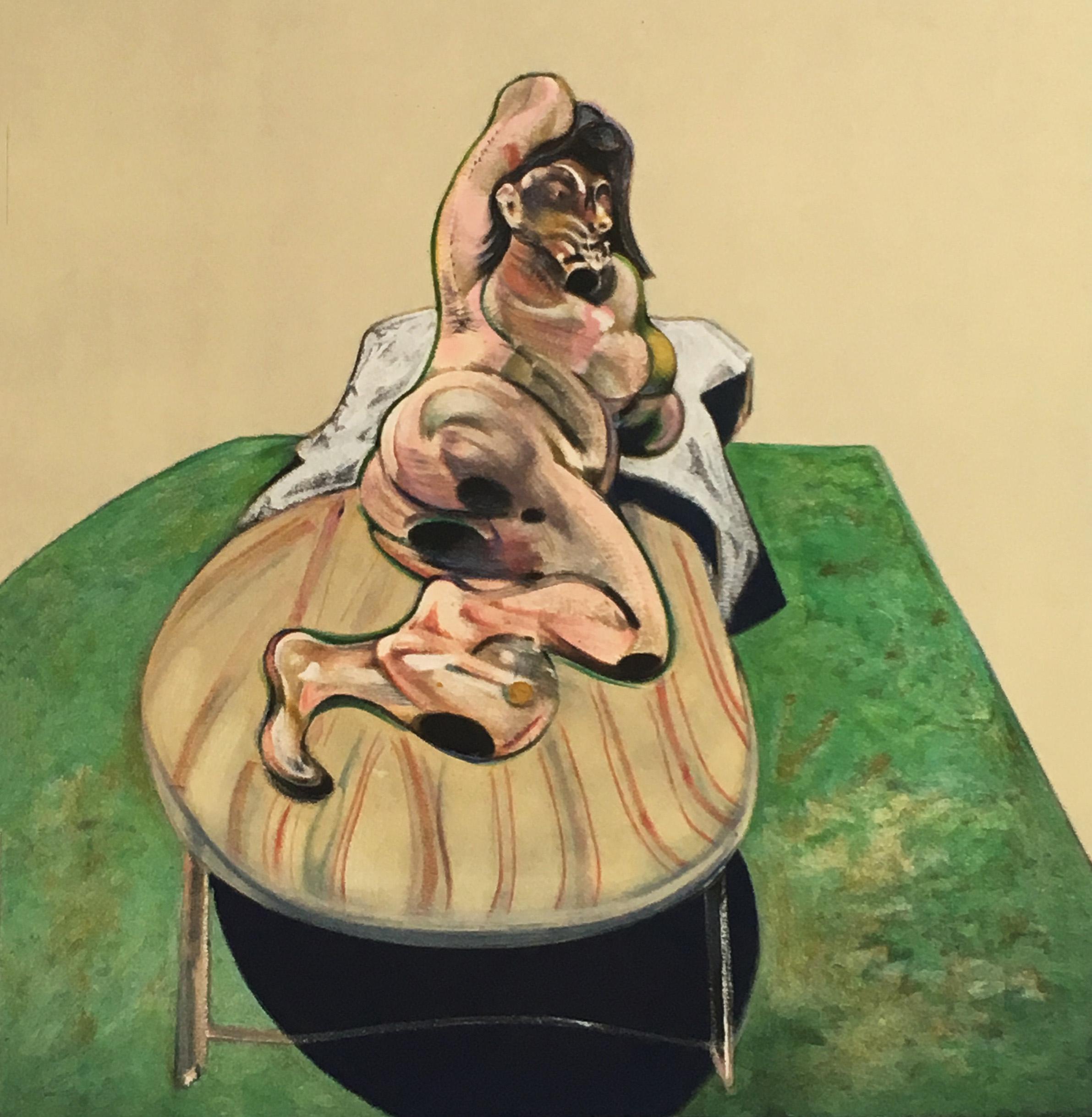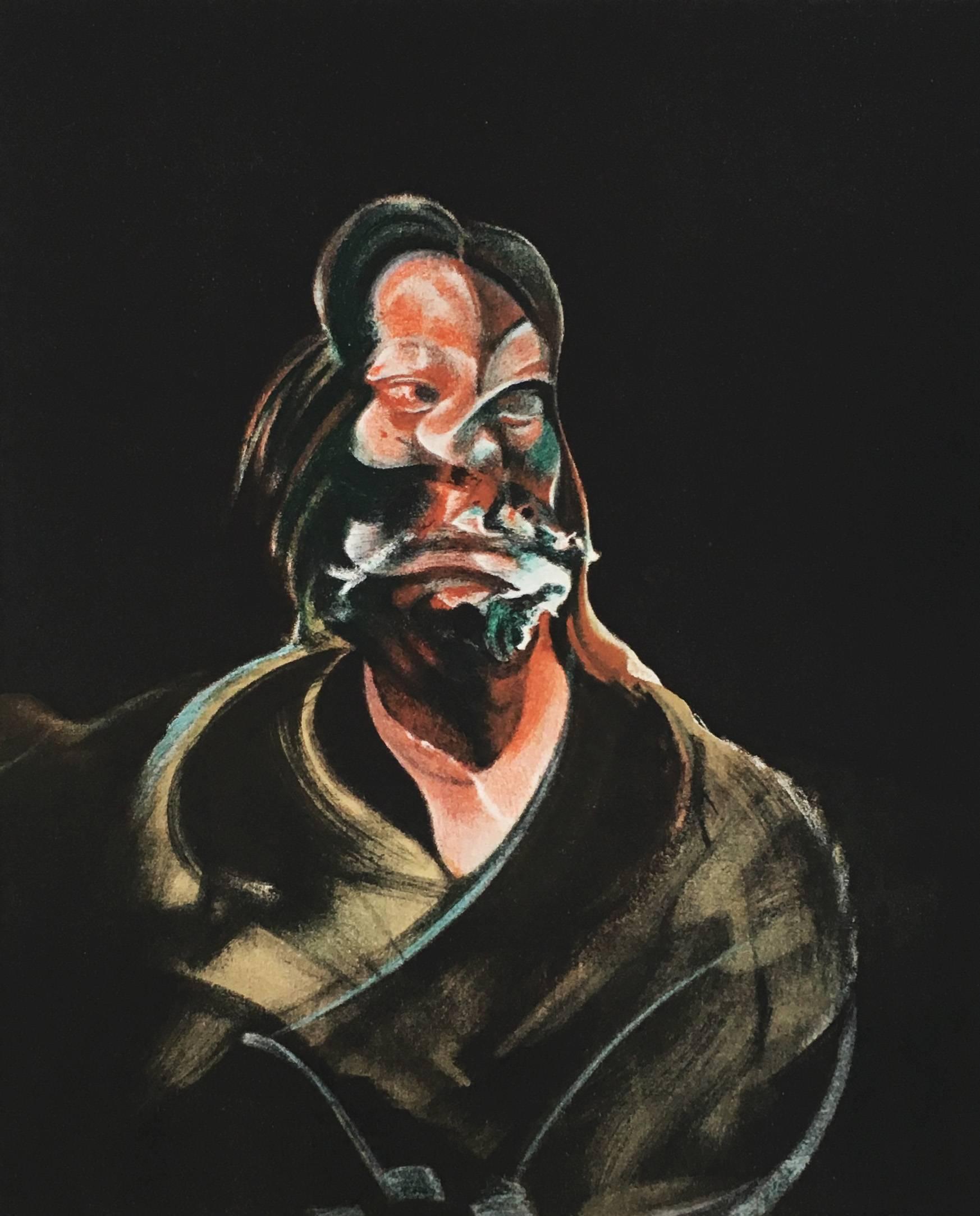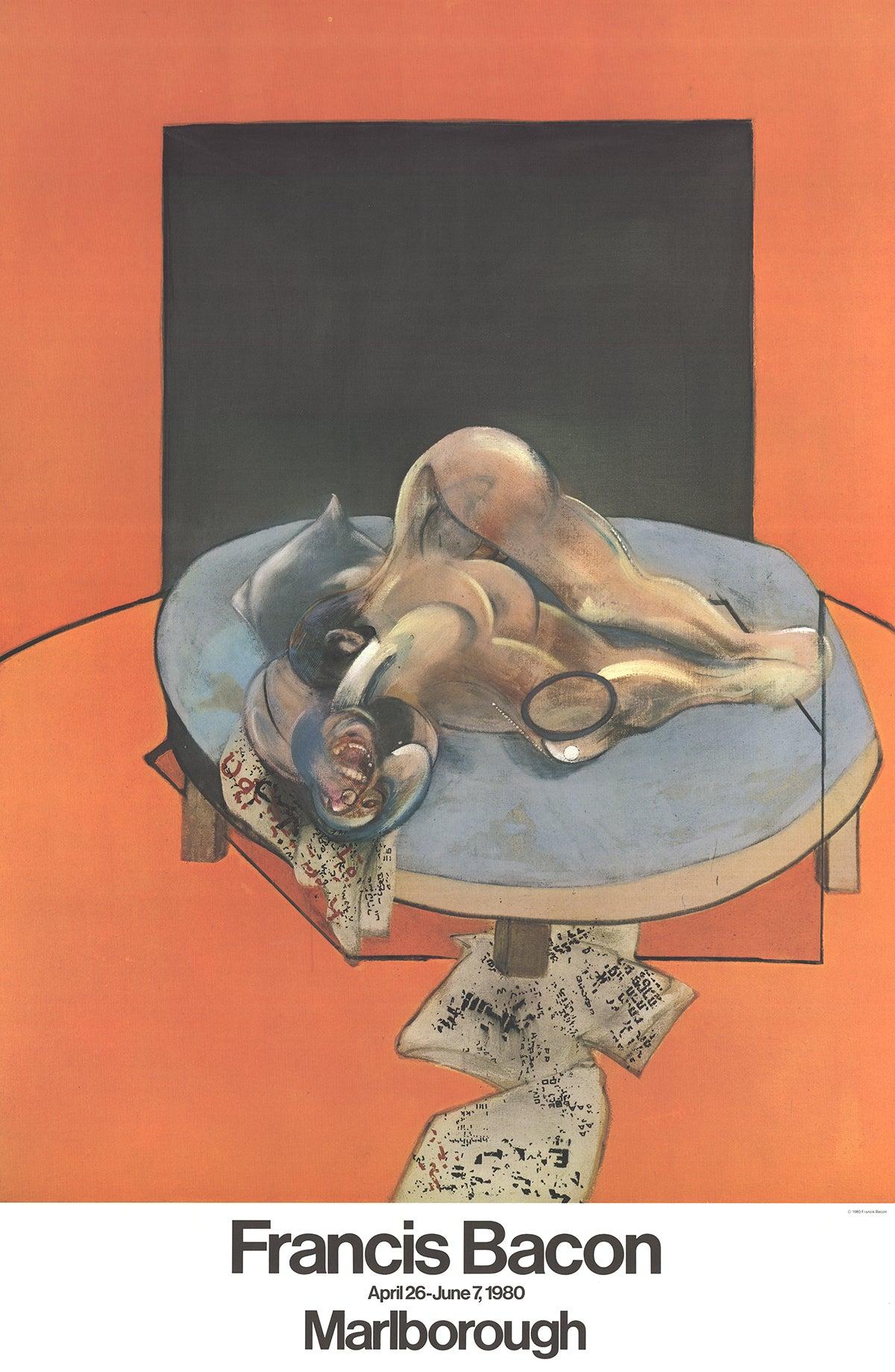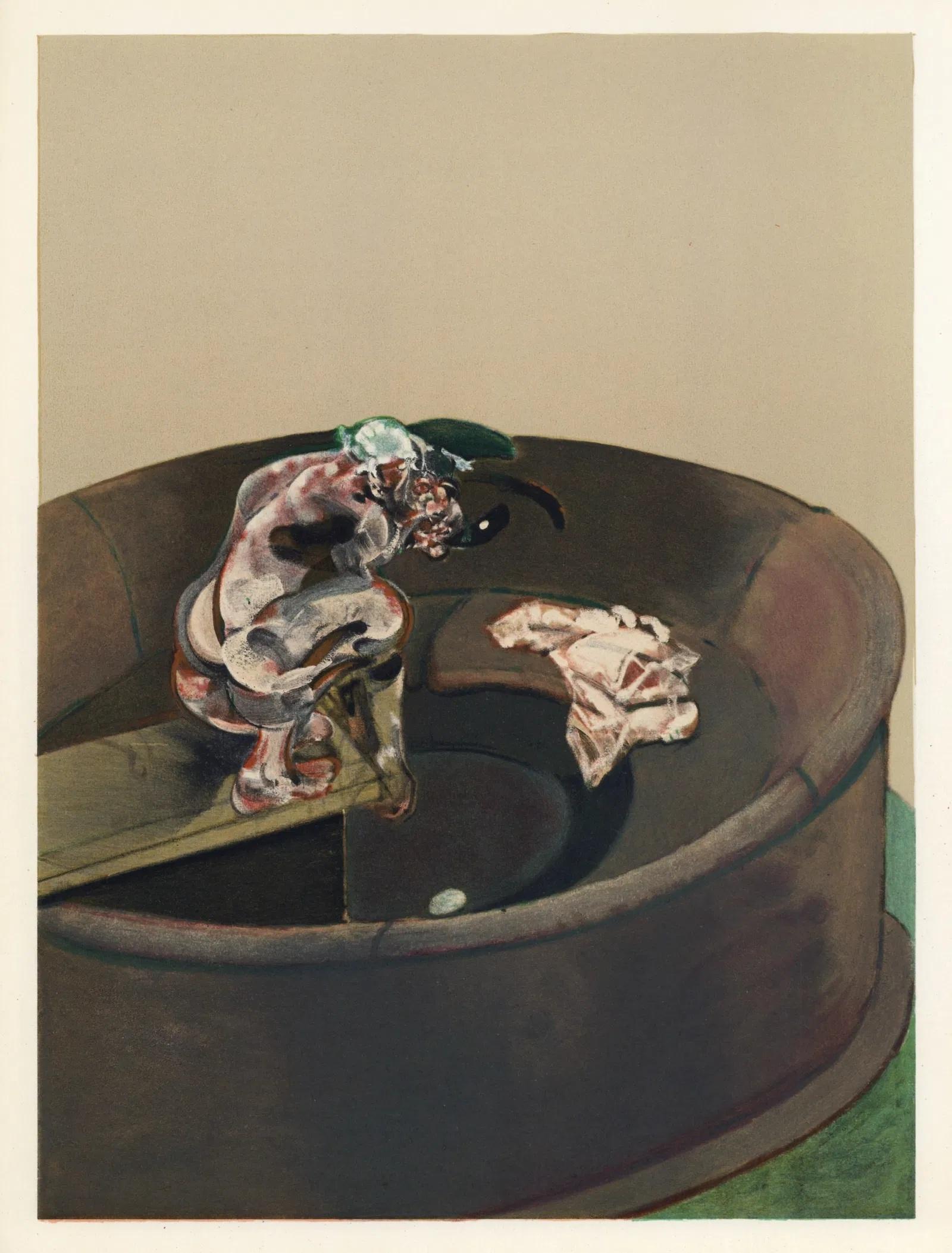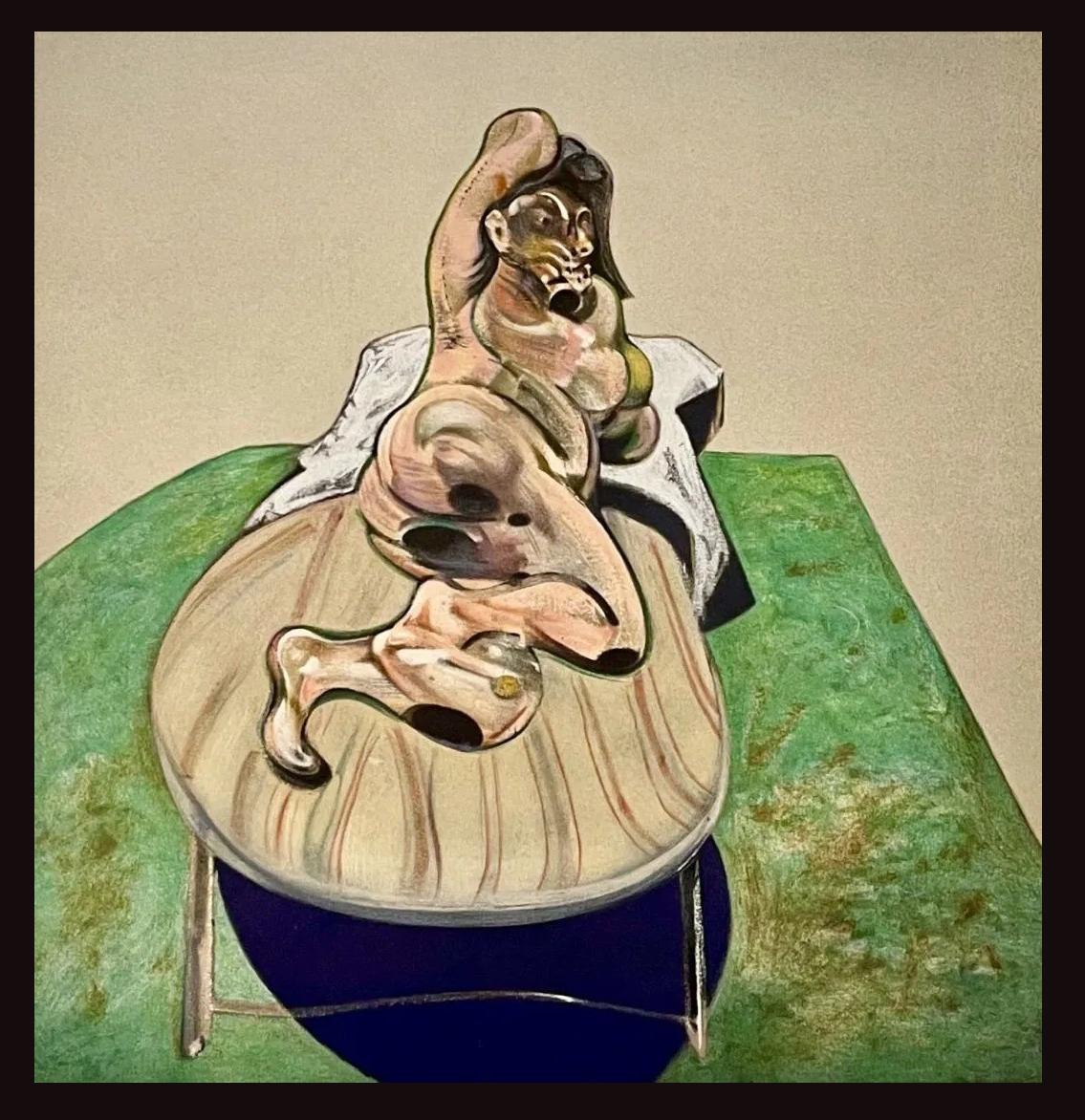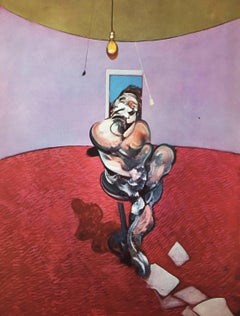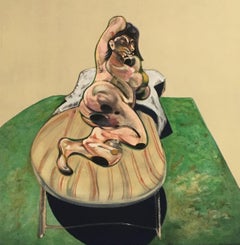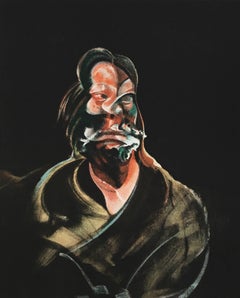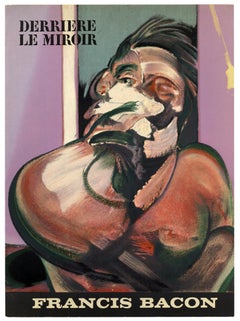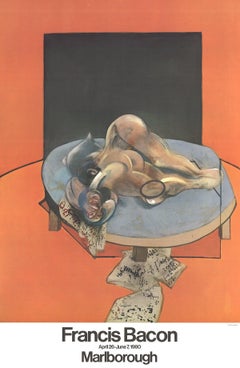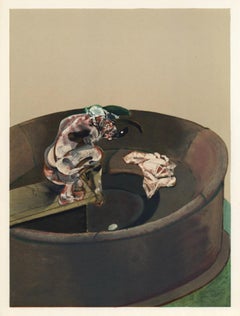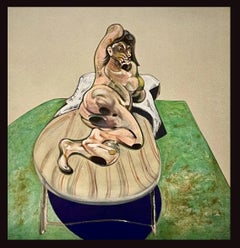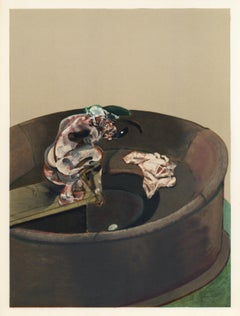Items Similar to 1960s Francis Bacon lithograph (from derrière le miroir)
Want more images or videos?
Request additional images or videos from the seller
1 of 8
(after) Francis Bacon1960s Francis Bacon lithograph (from derrière le miroir)1966
1966
$520
$65020% Off
£388.42
£485.5220% Off
€450.31
€562.8820% Off
CA$722.01
CA$902.5120% Off
A$809.28
A$1,011.6020% Off
CHF 421.37
CHF 526.7120% Off
MX$9,881.62
MX$12,352.0220% Off
NOK 5,349.83
NOK 6,687.2820% Off
SEK 5,071.15
SEK 6,338.9420% Off
DKK 3,359.77
DKK 4,199.7120% Off
Shipping
Retrieving quote...The 1stDibs Promise:
Authenticity Guarantee,
Money-Back Guarantee,
24-Hour Cancellation
About the Item
1960s Francis Bacon lithograph from Derrière le miroir:
Well-suited for matting & framing, this original 1960's print is derived from Bacon's historic work, Portrait of George Dyer Crouching and was constructed under the supervision of the artist. A highly decorative vintage 1960s Bacon frame-piece within reason.
Medium: Lithograph in colors on wove paper.
Dimensions: 15 x 11 inches.
Good overall vintage condition. Minor signs of aging & handling; light corner bends.
Unsigned from an edition of unknown.
From: Derrière le miroir. Printed in France 1966.
Derrière le miroir:
In October 1945 the French art dealer Aimé Maeght opens his art gallery at 13 Rue de Téhéran in Paris. His beginning coincides with the end of the Second World War and the return of a number of exiled artists back to France.
The publication was created in October 1946 (n°1) and published without interruption until 1982 (n°253). Its original articles and illustrations (mainly original color lithographs by the gallery artists) were famous at the time.
The lithographic publication covered only the artists exhibited by Maeght gallery either through personal or group exhibitions. Among them were, Pierre Alechinsky, Francis Bacon, Alexander Calder, Marc Chagall, Eduardo Chillida, Alberto Giacometti, Vassily Kandinsky, Ellsworth Kelly, Fernand Léger, Henri Matisse, Joan Miró, Saul Steinberg, and Antoni Tapies.
_
Francis Bacon was an Irish artist and one of the most unique, engaging figurative painters to emerge during the post-war period. His grotesque imagery—contorted limbs, howling mouths agape, blood—served as method of exploring nihilism and death at a time when Europe had been repeatedly savaged by war. Inspired by both the Old Masters and Surrealism, Bacon produced several compositions based on the work of other painters, notably including his arresting Study After Velazquez’s Portrait of Pope Innocent X (1953). In this iconic work, Bacon transforms Diego Velazquez’s classic portrait into a screaming, terrifying figure. “I feel ever so strongly that an artist must be nourished by his passions and his despairs,” he once said. “The feelings of desperation and unhappiness are more useful to an artist than the feeling of contentment, because desperation and unhappiness stretch your whole sensibility.” Born on October 28, 1909 in Dublin, Ireland, the self-taught artist moved to London to escape a hostile home life. Bacon became part of the local art scene in the British capital, which included his friends Lucian Freud, Isabel Lambert, and John Deakin. After the death of Bacon’s lover in 1972, his work became even more personalized, with a renewed focus on mortality. In 1963, a retrospective at the Guggenheim Museum in New York brought international prestige, which continued until his death on April 28, 1992 in Madrid, Spain. Today, his works are held in the collections of The Museum of Modern Art in New York, the Tate Gallery in London, the Art Institute of Chicago, the Hugh Lane in Dublin, and the Albertina in Vienna, among others.
Related Categories
Contemporary Art. Abstract art. Mid Century Modern. Francis Bacon 1960s. London. Post-War European Art. Mutated Bodies, Modern and Impressionist Art. Human Figure. Surrealist.
- Creator:(after) Francis Bacon (1909 - 1992, British)
- Creation Year:1966
- Dimensions:Height: 15 in (38.1 cm)Width: 11 in (27.94 cm)
- Medium:
- Movement & Style:
- Period:
- Condition:
- Gallery Location:NEW YORK, NY
- Reference Number:1stDibs: LU354314615472
(after) Francis Bacon
Francis Bacon (1909 – 1992) was an Irish-born British figurative painter well known for his bold figurative paintings and portraiture. His style is distinctive for his use of thick paint, energetic wide brushstrokes with half unmixed colors, bulbous forms and contorted, abstracted and even cubist features, lending an emotionally and psychologically complex expression. Bacon took up painting in his late 30s, having drifted as an interior decorator, "bon vivant" and gambler. He said that his artistic career was delayed because he spent too long looking for subject matter that could sustain his interest. His breakthrough came with the 1944 triptych Three Studies for Figures at the Base of a Crucifixion, which sealed his reputation as a uniquely bleak chronicler of the human condition. Amongst his common subjects were close friends and drinking companions, as well as crucifixions and popes. After his first solo show at Hanover Gallery in 1949, prominent English writer, painter and critic Wyndham Lewis wrote: "The Hanover Show is of exceptional importance. Of the younger painters none actually paints so beautifully as Francis Bacon. Bacon is one of the most powerful artists in Europe today and he is perfectly in tune with his time".
About the Seller
5.0
Vetted Professional Seller
Every seller passes strict standards for authenticity and reliability
Established in 2014
1stDibs seller since 2016
4,526 sales on 1stDibs
Typical response time: 1 hour
- ShippingRetrieving quote...Shipping from: New York, NY
- Return Policy
Authenticity Guarantee
In the unlikely event there’s an issue with an item’s authenticity, contact us within 1 year for a full refund. DetailsMoney-Back Guarantee
If your item is not as described, is damaged in transit, or does not arrive, contact us within 7 days for a full refund. Details24-Hour Cancellation
You have a 24-hour grace period in which to reconsider your purchase, with no questions asked.Vetted Professional Sellers
Our world-class sellers must adhere to strict standards for service and quality, maintaining the integrity of our listings.Price-Match Guarantee
If you find that a seller listed the same item for a lower price elsewhere, we’ll match it.Trusted Global Delivery
Our best-in-class carrier network provides specialized shipping options worldwide, including custom delivery.More From This Seller
View All1960s Francis Bacon lithograph (from derrière le miroir)
By (after) Francis Bacon
Located in NEW YORK, NY
1960s Francis Bacon lithograph from Derrière le miroir:
Well-suited for matting & framing, this original 1960's print is derived from Bacon's ...
Category
1960s Contemporary Abstract Prints
Materials
Lithograph
1960s Francis Bacon lithograph (from Bacon derrière le miroir)
By (after) Francis Bacon
Located in NEW YORK, NY
1960s Francis Bacon lithograph from Derrière le miroir:
Well-suited for matting & framing, this original 1960's print is derived from Bacon's ...
Category
1960s Modern Figurative Prints
Materials
Lithograph
1960s Francis Bacon lithograph (Bacon Isabel Rawsthorne)
By (after) Francis Bacon
Located in NEW YORK, NY
1960s Francis Bacon lithograph from Derrière le miroir:
Well-suited for matting & framing, this original 1960's print is derived from Bacon's ...
Category
1960s Contemporary Abstract Prints
Materials
Lithograph
Francis Bacon Derrière le Miroir 1966 (cover)
By (after) Francis Bacon
Located in NEW YORK, NY
1960s Francis Bacon lithographic cover from Derrière le miroir:
A highly decorative vintage 1960s Bacon frame-piece constructed under the supervision of the artist.
Medium: Litho...
Category
1960s Contemporary Abstract Prints
Materials
Lithograph
1960s Antoni Tàpies lithograph (derrière le miroir)
By Antoni Tàpies
Located in NEW YORK, NY
Vintage 1960s Antoni Tàpies Lithograph
Portfolio: Derriere Le Miroir. Published by: Galerie Maeght/Aime Maeght, Paris 1967.
Lithograph in colors; 1967.
15 x 22 inches.
Center fold...
Category
1960s Modern Abstract Prints
Materials
Lithograph
$240 Sale Price
20% Off
1960s Antoni Tàpies lithograph (derriere le miroir)
By Antoni Tàpies
Located in NEW YORK, NY
Antoni Tàpies Lithograph c. 1967 from Derrière le miroir:
Lithograph in colors; 15 x 22 inches.
Very good overall vintage condition; contains center fold-line as originally issued...
Category
1960s Contemporary Abstract Prints
Materials
Lithograph
$380 Sale Price
20% Off
You May Also Like
Francis Bacon, At Marlborough, 1980 Vintage Lithograph
By (after) Francis Bacon
Located in Brooklyn, NY
The 1980 exhibition poster for Francis Bacon's show at the Marlborough Gallery in New York features an image of his painting Figure in a Room (1962). This artwork depicts a solitary ...
Category
1970s Contemporary Figurative Prints
Materials
Offset
Francis Bacon 'Portrait of George Dyer Crouching' color lithograph, 1966 (After)
By (after) Francis Bacon
Located in Pembroke Pines, FL
Lithograph on vélin paper. Inscription: Unsigned and unnumbered. Good condition. Notes: From Derrière le miroir, N° 162. Published by Aimé Maeght, Éditeur, Paris; printed by Éditions...
Category
1960s Contemporary Prints and Multiples
Materials
Lithograph
Francis Bacon, 'Henrietta Moraes' original color lithograph, 1966
By (after) Francis Bacon
Located in Pembroke Pines, FL
Lithograph on vélin paper. Inscription: Unsigned and unnumbered. Good condition. Notes: From Derrière le miroir, N° 162. Published by Aimé Maeght, Éditeur, Paris; printed by Éditions...
Category
1960s Contemporary Prints and Multiples
Materials
Lithograph
"George Dyer Squatting" lithograph
By (after) Francis Bacon
Located in Henderson, NV
Medium: lithograph (after the painting). Printed in 1966 for Derriere le Miroir (issue number 162) and published in Paris by Maeght. This lithograph was done after the Francis Bacon ...
Category
1960s Surrealist Portrait Prints
Materials
Lithograph
Francis Bacon, 'Portrait of George Dyer Talking' color lithograph, 1966 (After)
By (after) Francis Bacon
Located in Pembroke Pines, FL
Lithograph on vélin paper. Inscription: Unsigned and unnumbered. Good condition. Notes: From Derrière le miroir, N° 162. Published by Aimé Maeght, Éditeur, Paris; printed by Éditions...
Category
1960s Contemporary Prints and Multiples
Materials
Lithograph
Francis Bacon 'George Dyer Fixing a Curtain Cord' color lithograph, 1966 (After)
By (after) Francis Bacon
Located in Pembroke Pines, FL
Lithograph on vélin paper. Inscription: Unsigned and unnumbered. Good condition. Notes: From Derrière le miroir, N° 162. Published by Aimé Maeght, Éditeur, Paris; printed by Éditions...
Category
1960s Contemporary Prints and Multiples
Materials
Lithograph

